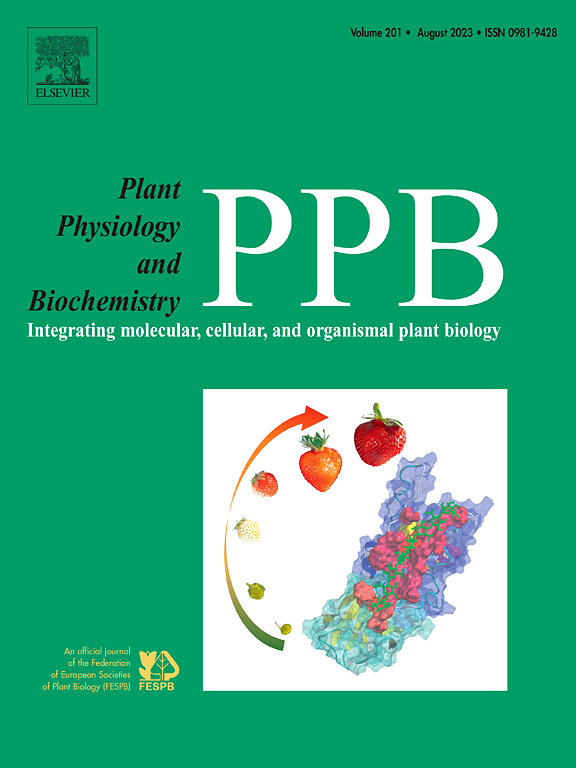Influence of arsenic exposure on the daily changes of glycerophospholipid turnover and assessment of defence mechanisms in tobacco hairy roots
IF 6.1
2区 生物学
Q1 PLANT SCIENCES
引用次数: 0
Abstract
Arsenic (As) affects several key physiological and metabolic processes, resulting in reduced seed germination and plant growth. The aim of this work was to study the impact of arsenite (AsIII) treatment on the metabolism of glycerophospholipids (MGPLs), evaluating the turnover activity (TA) of major GPLs, the expression of genes involved in this metabolism and also related to stress response. Total antioxidant activity (TAA) under AsIII-induced stress was evaluated as well as the implication of the circadian clock (CC) on the parameters studied. For this purpose, tobacco (Nicotiana tabacum) hairy roots (HRs) synchronized with a 12/12 h light/dark photoperiod were used. The TA of phosphatidylcholine (PC) and phosphatidylethanolamine (PE) showed a circadian behavior, especially under untreated conditions. However, the As treatment significantly modified the TA profiles of all analyzed GPLs, by inducing an opposite oscillation (PC and LysoPC) or increasing their TA (LysoPE and cardiolipin) during both the light and dark phase. Curiously, under As-treatment, the relative expression of key genes involved in the MGPLs (NtLPAT2 and NtCEK4) was increased and showed a circadian oscillation, while under control conditions, no significant changes were detected. NtPHT4;1 gene, involved in As-induced stress, showed a circadian expression profile, which was conserved under AsIII treatment but with an antiphase performance. Moreover, TAA was significantly affected in AsIII-treated HRs, mainly during the dark phase. Our results show that AsIII treatment affected the parameters studied and constitute valuable evidence to unravel the plant responses and the CC implication under AsIII-induced stress.

求助全文
约1分钟内获得全文
求助全文
来源期刊
CiteScore
11.10
自引率
3.10%
发文量
410
审稿时长
33 days
期刊介绍:
Plant Physiology and Biochemistry publishes original theoretical, experimental and technical contributions in the various fields of plant physiology (biochemistry, physiology, structure, genetics, plant-microbe interactions, etc.) at diverse levels of integration (molecular, subcellular, cellular, organ, whole plant, environmental). Opinions expressed in the journal are the sole responsibility of the authors and publication does not imply the editors'' agreement.
Manuscripts describing molecular-genetic and/or gene expression data that are not integrated with biochemical analysis and/or actual measurements of plant physiological processes are not suitable for PPB. Also "Omics" studies (transcriptomics, proteomics, metabolomics, etc.) reporting descriptive analysis without an element of functional validation assays, will not be considered. Similarly, applied agronomic or phytochemical studies that generate no new, fundamental insights in plant physiological and/or biochemical processes are not suitable for publication in PPB.
Plant Physiology and Biochemistry publishes several types of articles: Reviews, Papers and Short Papers. Articles for Reviews are either invited by the editor or proposed by the authors for the editor''s prior agreement. Reviews should not exceed 40 typewritten pages and Short Papers no more than approximately 8 typewritten pages. The fundamental character of Plant Physiology and Biochemistry remains that of a journal for original results.

 求助内容:
求助内容: 应助结果提醒方式:
应助结果提醒方式:


